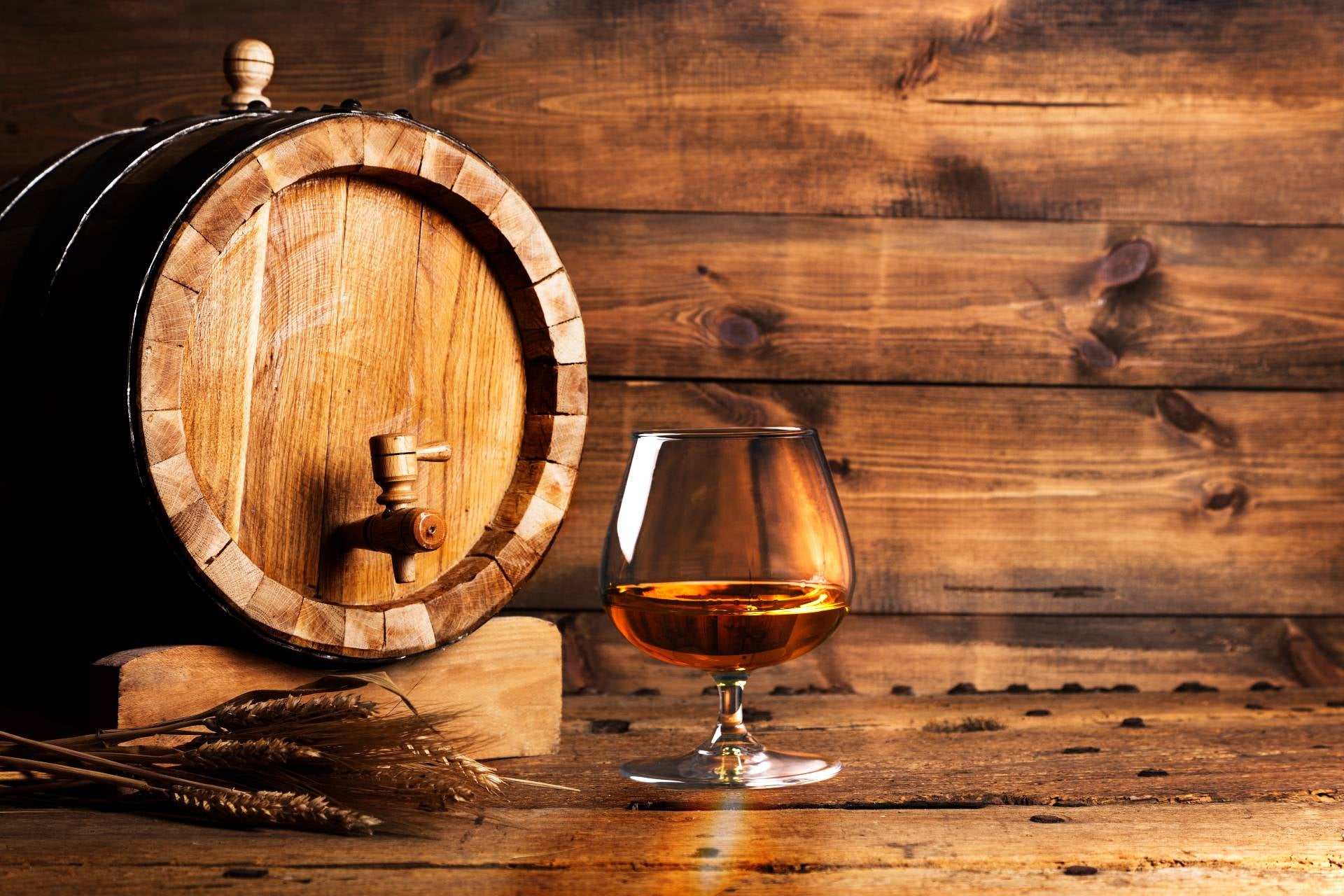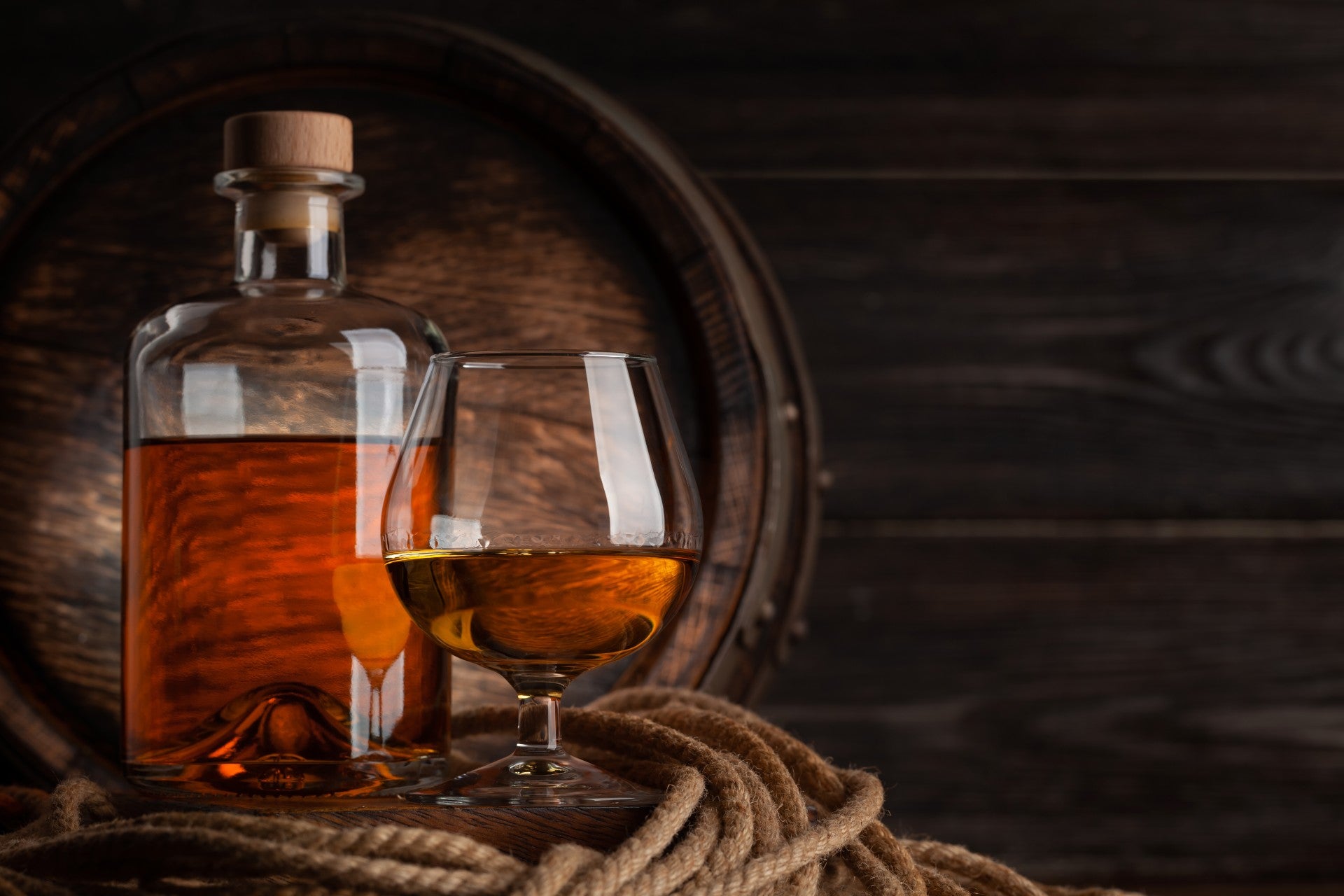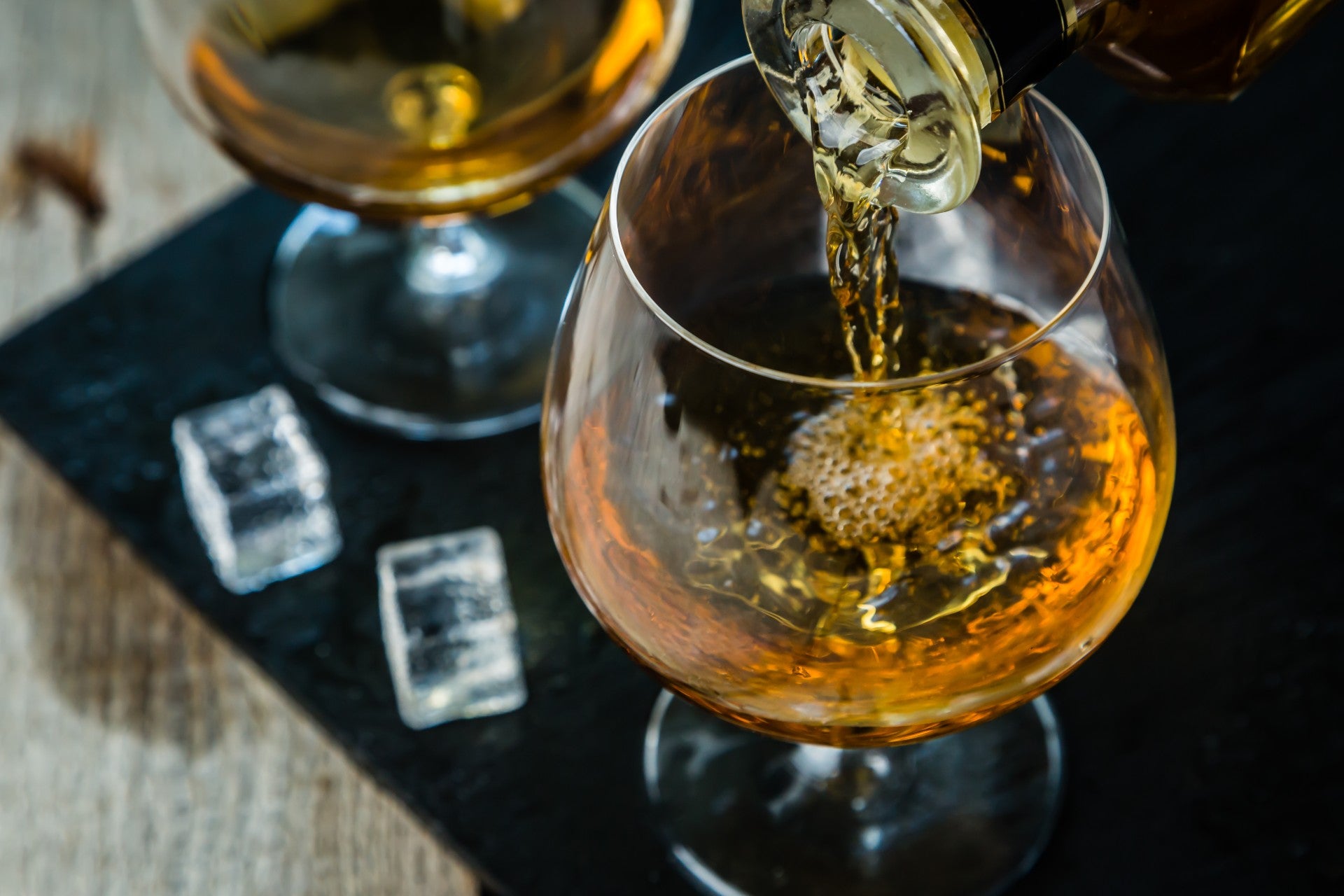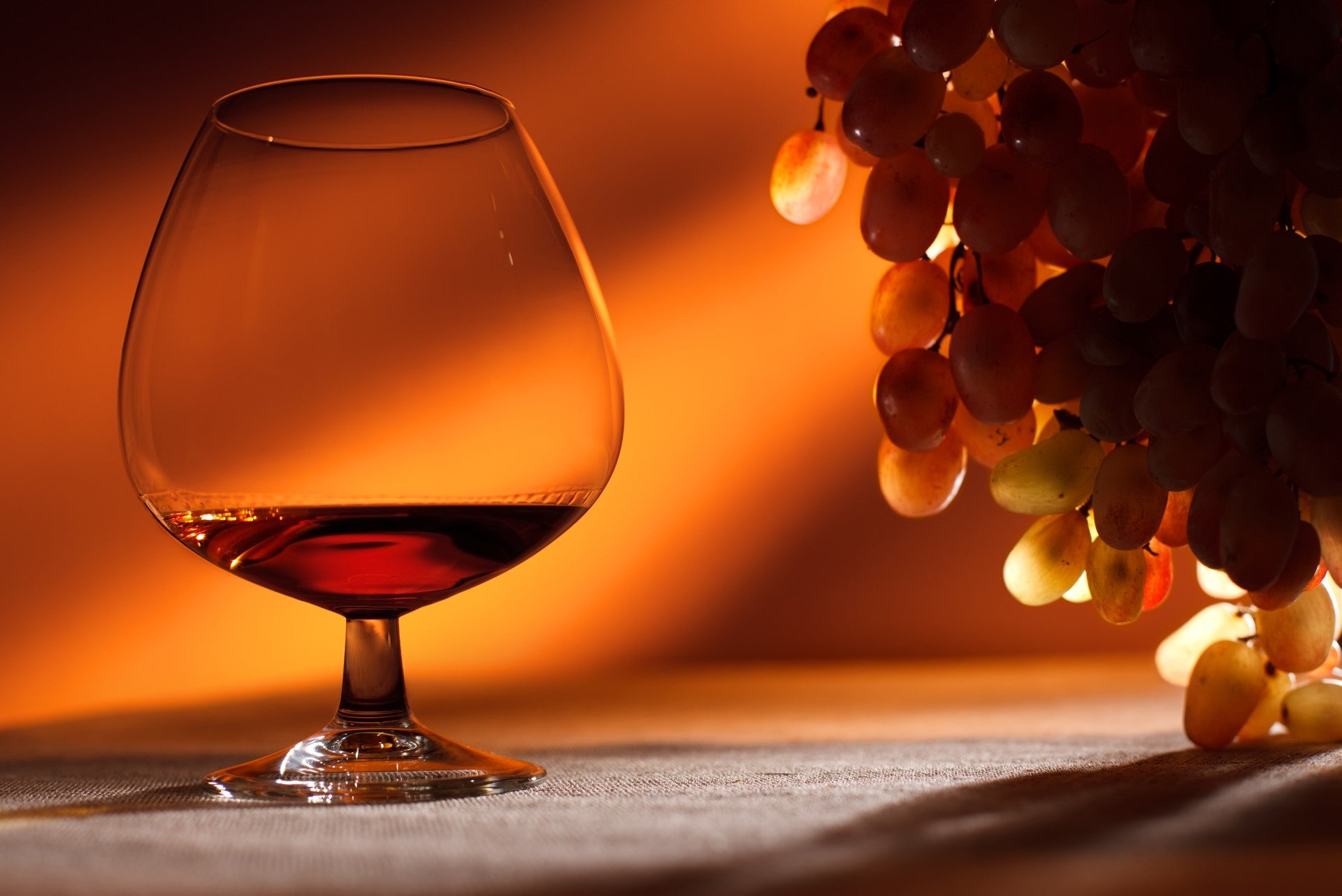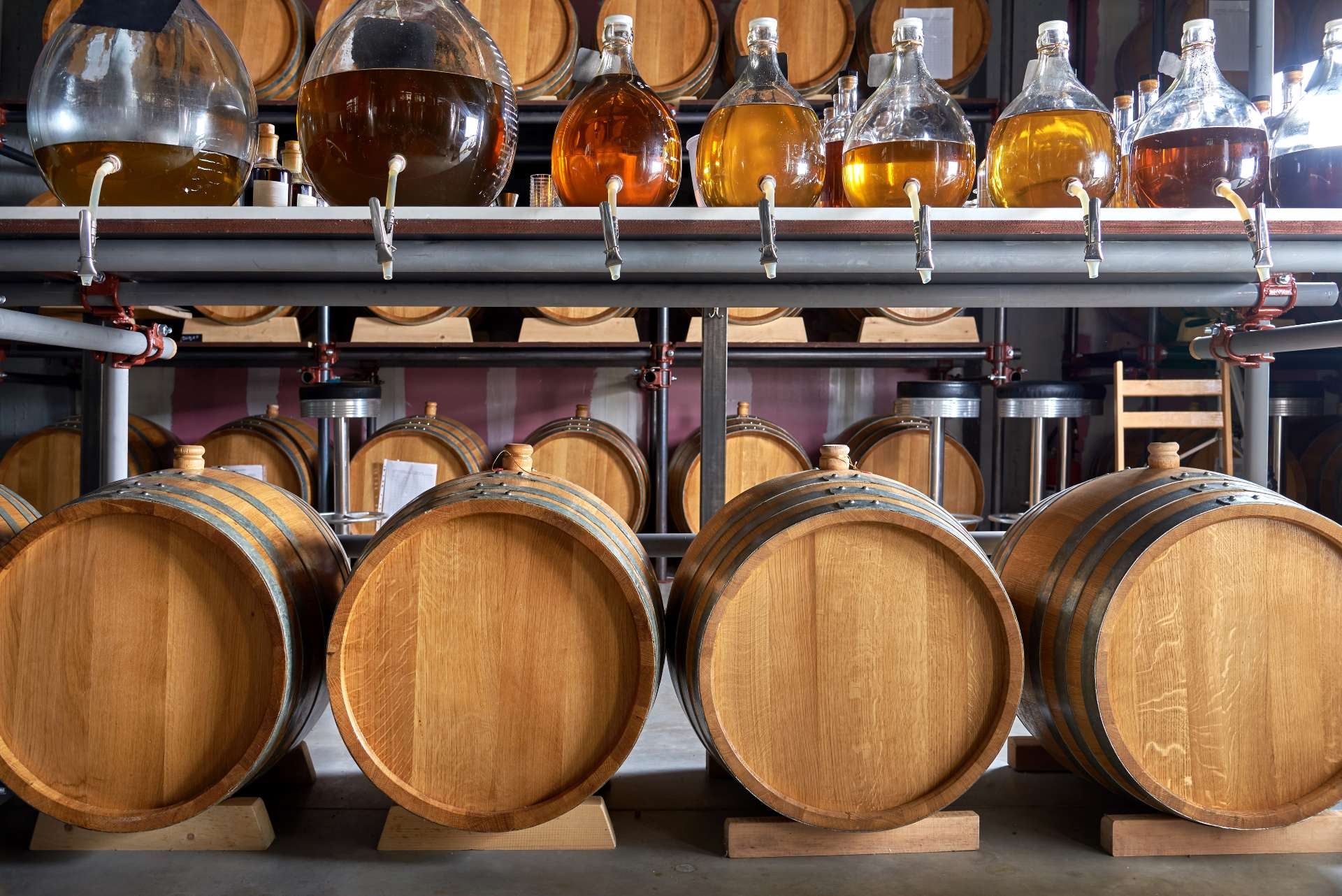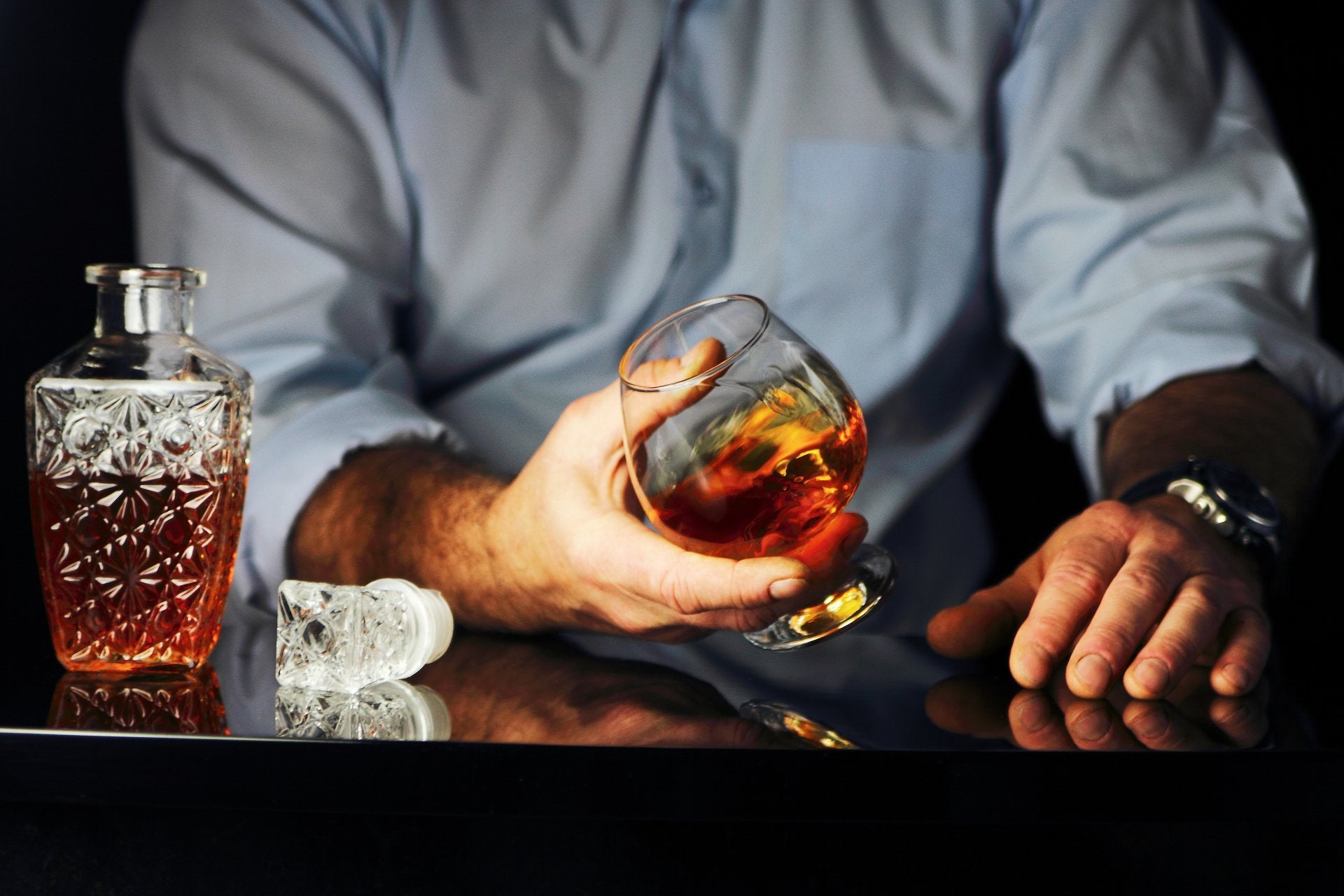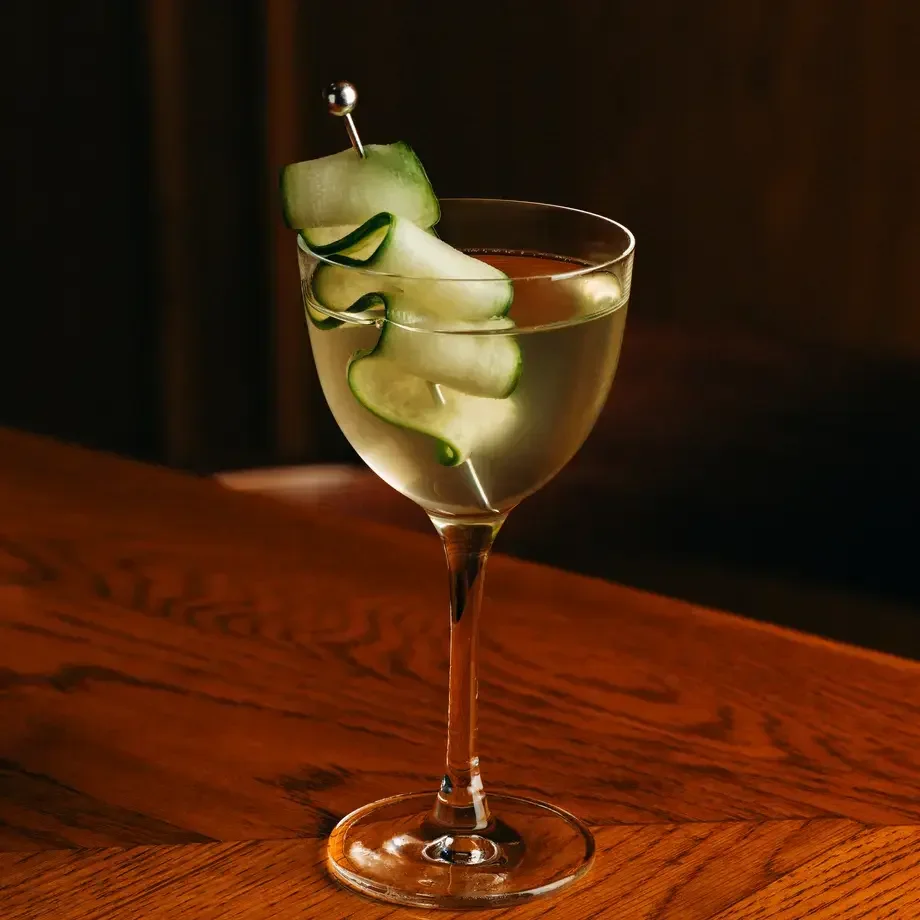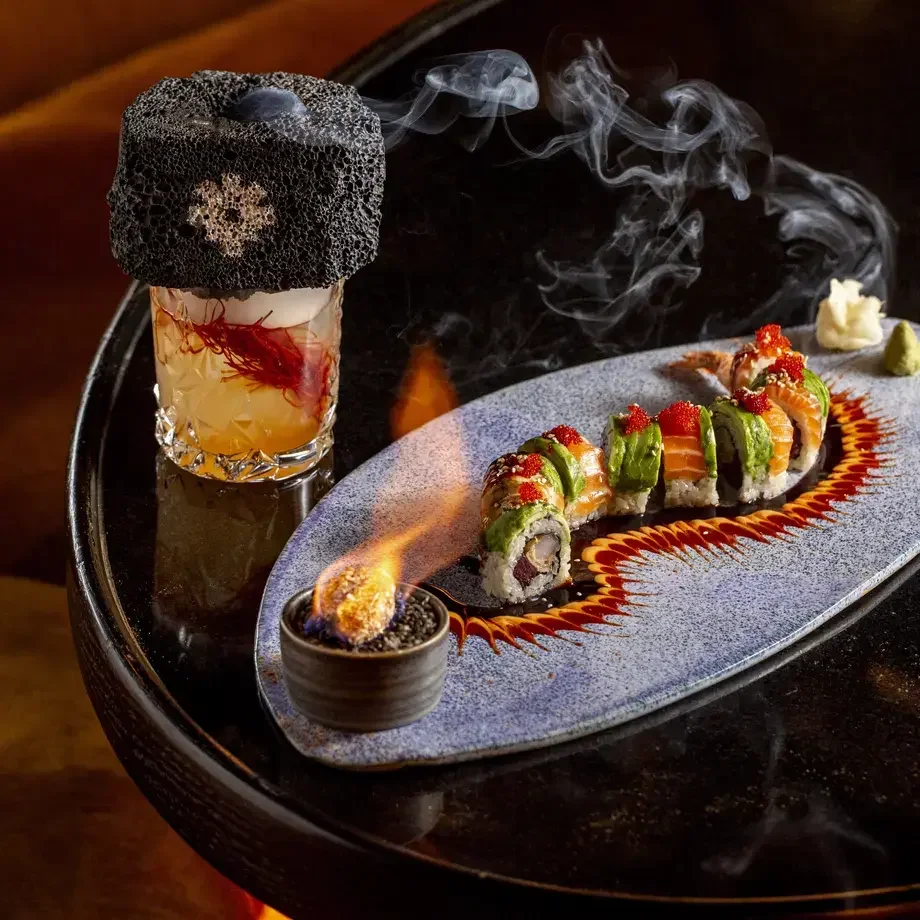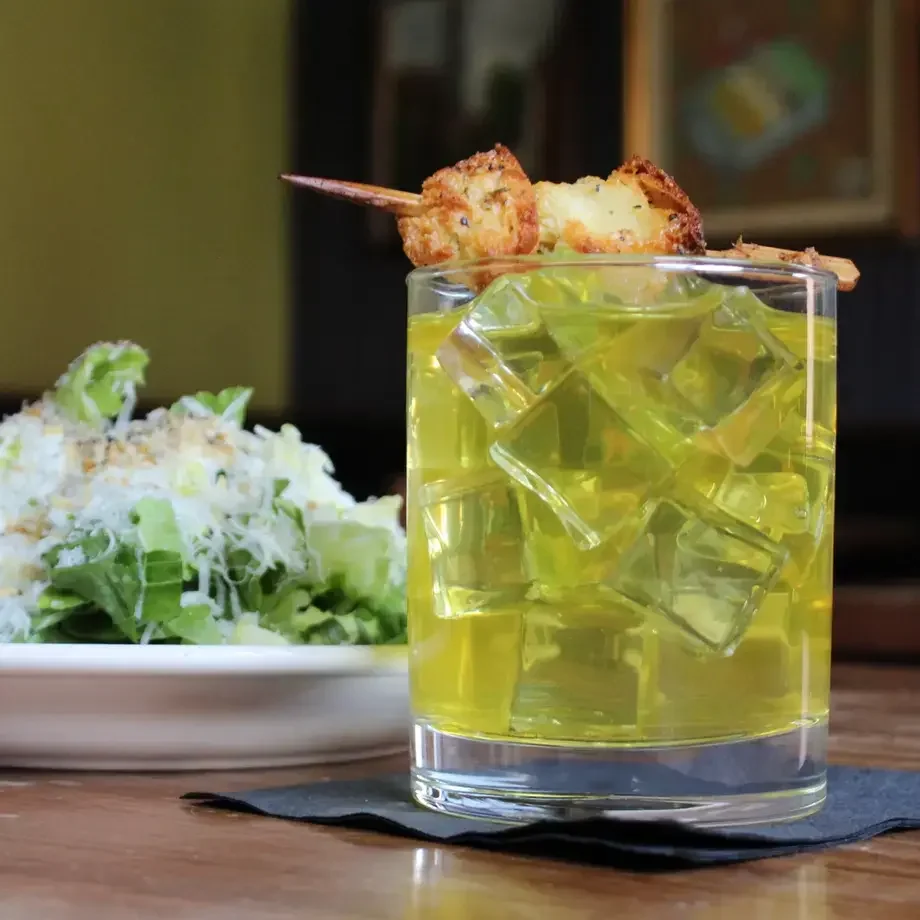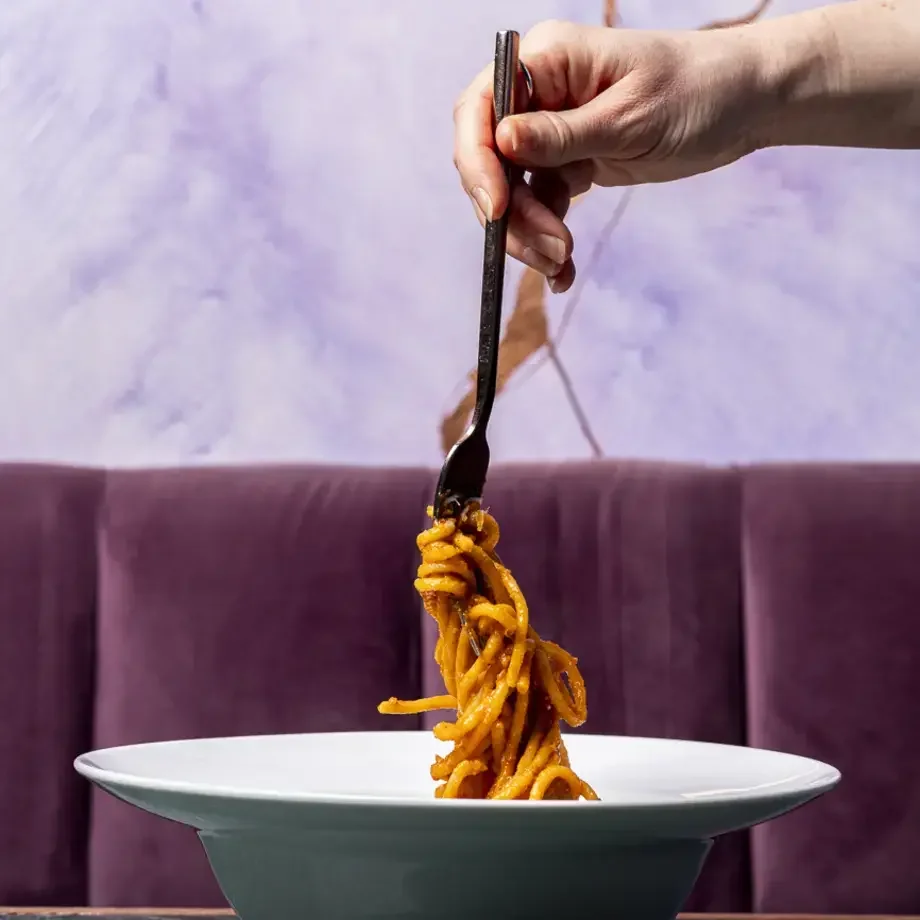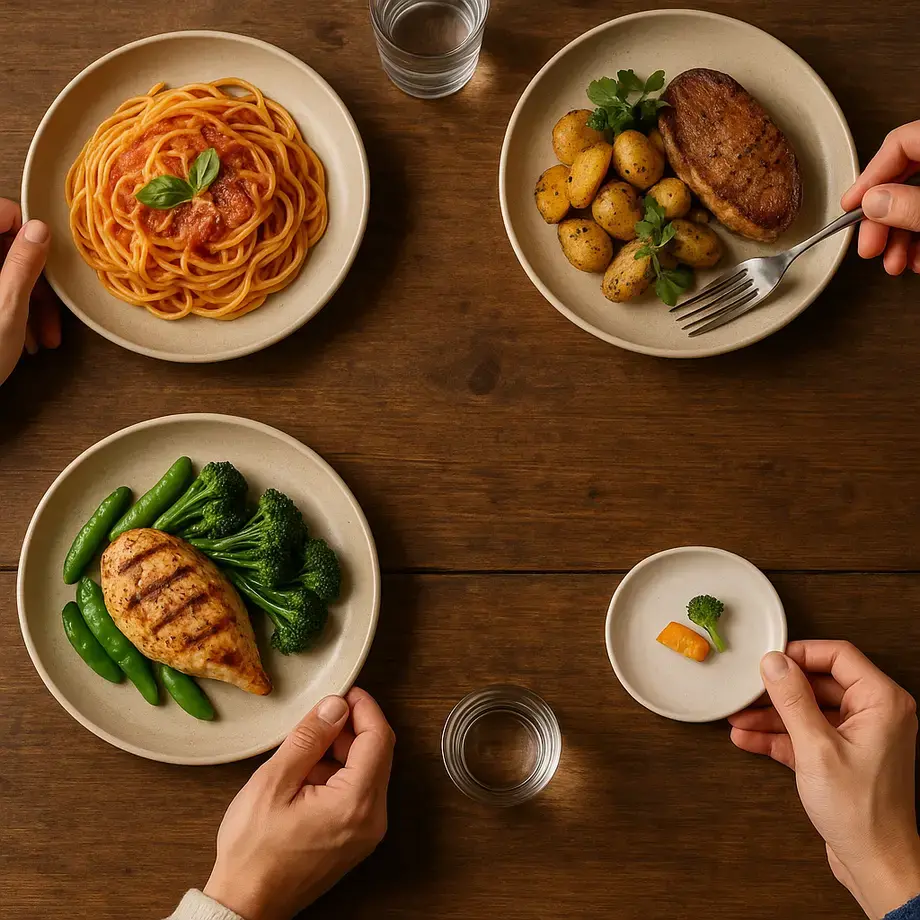Grapes
Cognac is made from very acidic and dry white wine; though virtually undrinkable, it is perfect for distillation and ageing. Only a few grape varieties may be used to make it. For it to be considered a true cru, the wine must be at least 90% Ugni blanc (known in Italy as Trebbiano), Folle blanche and Colombard, while up to 10% of the grapes used can be Folignan, Jurançon blanc, Meslier St-François (also called Blanc Ramé), Sélect, Montils, or Sémillon. Cognacs without a cru designation have more flexibility in the allowed grape varieties, needing at least 90% Colombard, Folle blanche, Jurançon blanc, Meslier Saint-François, Montils, Sémillon, or Ugni blanc, and up to 10% Folignan or Sélect.
Fermentation and distillation
After the grapes are pressed, the juice ferments for 2–3 weeks, with the region's native, wild yeasts converting the fruit sugars into alcohol; neither sugar nor sulphur may be added. The alcohol content of the wine is approximately 7 to 8% at this point.
The distillation process takes place in traditionally shaped Charentais copper alembic stills. Two distillations must be carried out; the resulting eau de vie is a colourless spirit of about 70% alcohol.
Ageing
Once distillation is complete, cognac must be aged in Limousin oak casks for a minimum of two years before it can be sold to the public. It’s typically put into casks at an alcohol by volume strength of around 70%. As the cognac comes into contact with the oak barrel and the air, it evaporates approximately 3% each year, losing alcohol and water over time. A cognac's alcohol content decreases to 40% after more than ten years in an oak barrel. The cognac is then transferred to large glass bottles called bonbonnes, and then stored for future blending. Since oak barrels no longer contribute to flavour after four or five decades, more extended ageing periods aren't necessary.
Blending
Cognac's age is calculated based on the youngest component used in its blend. The blend is usually of different ages and – for the larger and more commercial producers – from different local areas. This blending of different eaux de vie is necessary to achieve a range of flavours absent from an eau de vie produced by a single distillery.
How is brandy made?
Brandy production varies by region, and thus production methods differ as well. Wine brandy is produced using a variety of grape cultivars. A special selection of cultivars, providing a distinctive aroma and character, is used for high-quality brandies, while less expensive brands use whatever wine is available.
Brandy is made from ‘base wine’, which significantly differs from regular table wines. The grapes used for brandy are picked early to achieve a higher acid concentration and lower sugar levels. Depending on the brandy style, the yeast sediment produced during fermentation may or may not be kept in the wine.


